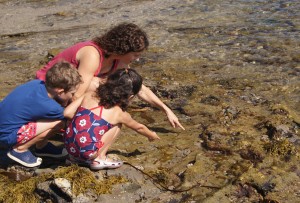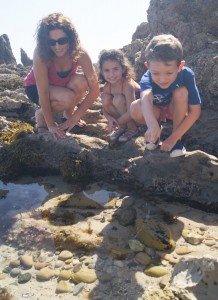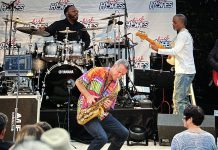
Some of the most beautiful and cozy “homes” in Corona del Mar aren’t found on the Flower streets, the Avenues, nor perched in architectural splendor atop the cliffs of Ocean Blvd.
They’re located in the rocky outcrops that form Little Corona’s tidepools, a place where ocean, air and earth meet in an ever-changing harmony of sight, sound, tranquility, briny chaos, and varied life forms.
All year long, albeit much more so in summer, Newport’s tidepools attract everyone from artists to scientists, State Fish and Game Rangers, to countless school kids looking for squiggly and pulsating creatures that they can write about for their class projects.
No tickets required for entrance to this natural theater, where with patient and down-on-your-knees observation, one can spy nature’s million-year-old dramas played out in camouflaged slow motion. But you’ve really got to look to see.
Accessed via a trail near the corner of Poppy Ave. and Ocean Blvd., the tidepools provide a wonderful opportunity to sample a truly foreign world.
Some of the creatures you view may be full time residents of just one pool, while others are transient, washed in and out with the tides or wave action.
Get past the reflected glare and you’ll see gooseneck barnacles, hermit crabs, turban snails, sea anemones, rock louse, shore crabs, mussels, kelp snails, rough limpets, sculpin, opal eye fish, various starfish species, occasional octopus, sponges, abalone, and more.
As numerous as they may appear, Newport’s Natural Resource Management Specialist, Michelle Clemente, said that tidal zone life are endangered, especially those creatures residing in the easily accessible rocks at Little Corona.
The best way to protect it “is through education,” she said. “Most people see the beach as purely recreational, not as habitat, so we’re down there when most people are in order to educate visitors as to the importance of our tidal zones.”
There are four tidal zones: the Splash Zone, which is the driest; the Upper Zone, which is either dry or inundated; the Mid-Zone, which is underwater most of the time; and the Underwater Zone, no clarification needed.
needed.
During the summer months, a member of Clemente’s staff is on site daily from 10 a.m. to 2 p.m. Throughout the year, natural life interpreters are there weekends and holidays, also from 10 to 2.
At low-low tides, where virtually there’s no chance anybody can be swamped or dumped by waves, Interpretive Officer Jenny Gregurek leads monthly shoreline hikes from CdM to Crystal Cove and back. And if anybody knows shorelines, it’s Gregurek, Clemente explained: “Jenny has trekked the entire California coastline.”
There’s no doubt that Little Corona is impacted. Last year alone at the interpretive table, naturalists talked to 69,000 people, mostly in the summer months.
“There seems to be more touching than taking (of specimens),” Clemente said, which is “symptomatic of people getting excited; it shows how important our tidepools are.”
Although most beachgoers are well behaved, there’re a small percentage of visitors exhibiting destructive behavior. To that end, Clemente hopes she can convince local officials to increase sporadic law enforcement presence on the sands (not a bad detour for the cops).
Also, her department soon will be introducing the cleverly named “ISOpod,” which stands for Interactive Sealife Outreach Pod: a 25-foot-long, rolling interpretive center that will feature two touch tanks and a display tank, and that will offer “lots of interesting and engaging educational activities,” she said.
Clemente hopes it can be parked at the restroom level on the road leading down to Little Corona.
And for those not familiar with the term, in ichthyologic nomenclature an Isopod is a tiny sea creature.
Whether you’re a local or a tourist, a trip to CdM’s tidepools is like visiting nature’s three-ring circus: you could call it one of the Greatest Flows on Earth.
Tide pool Rules:
. Never remove animals, shells, rocks or plants
. Never pick up animals, just observe them
. Walk gently, taking care not to step on plants or animals
. Never turn over rocks.
Contact the writer: Pleasepitchrich@yahoo.com.





To bad theres more to see on the bluffs at Little Corona, the tide pools according to many biologists” have the bio-diversity of a parking lot!” With thousands of folks poking and taking, plus toxic urban runoff dumping daily into the receiving waters, this is nothing to toot your horn about! The area known as an EPA designated ASBS (Area of Biological Significance) is supposed to be highly protected and cared for, seeing is believing. Buck Gully is even on the EPA 303d list of impaired water in a recreational area. There’s better biota in Anaheim Bay on the dock floats, the runoff needs to stop from the upper developments overwatering a because of poor irrigation methods, and pre-development short comings for water detention. But for some typical reason, officials and hired consultants call it “ground water”, which is really “hogwash”. Little Corona needs to be a classroom example of what over populating coastal areas and poor enforcement of federal laws looks like.